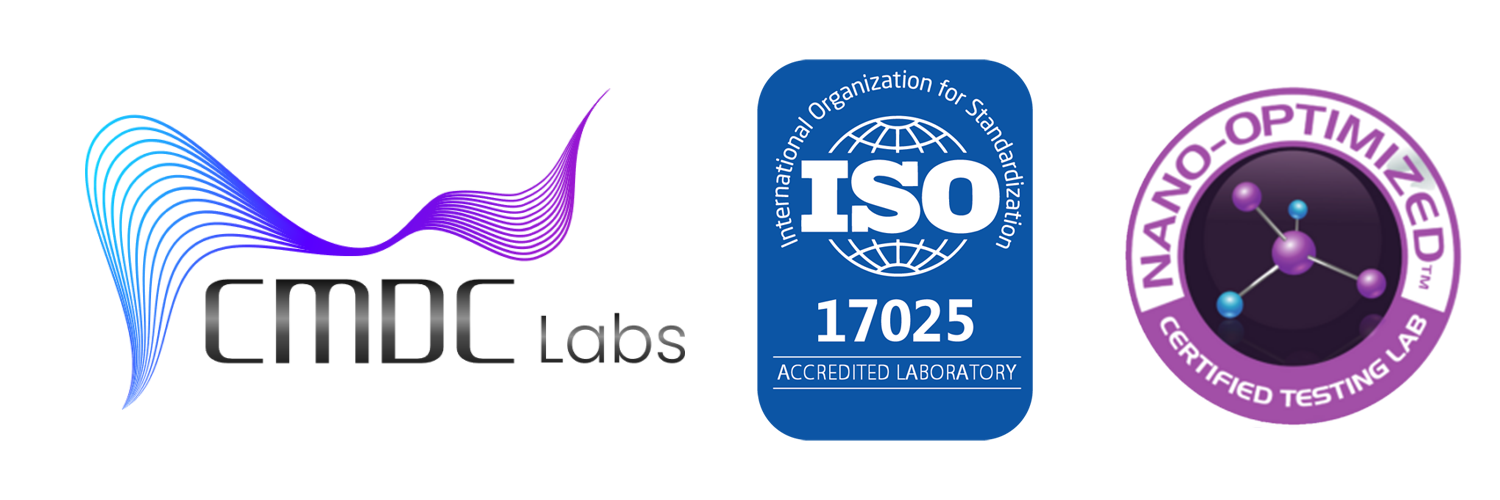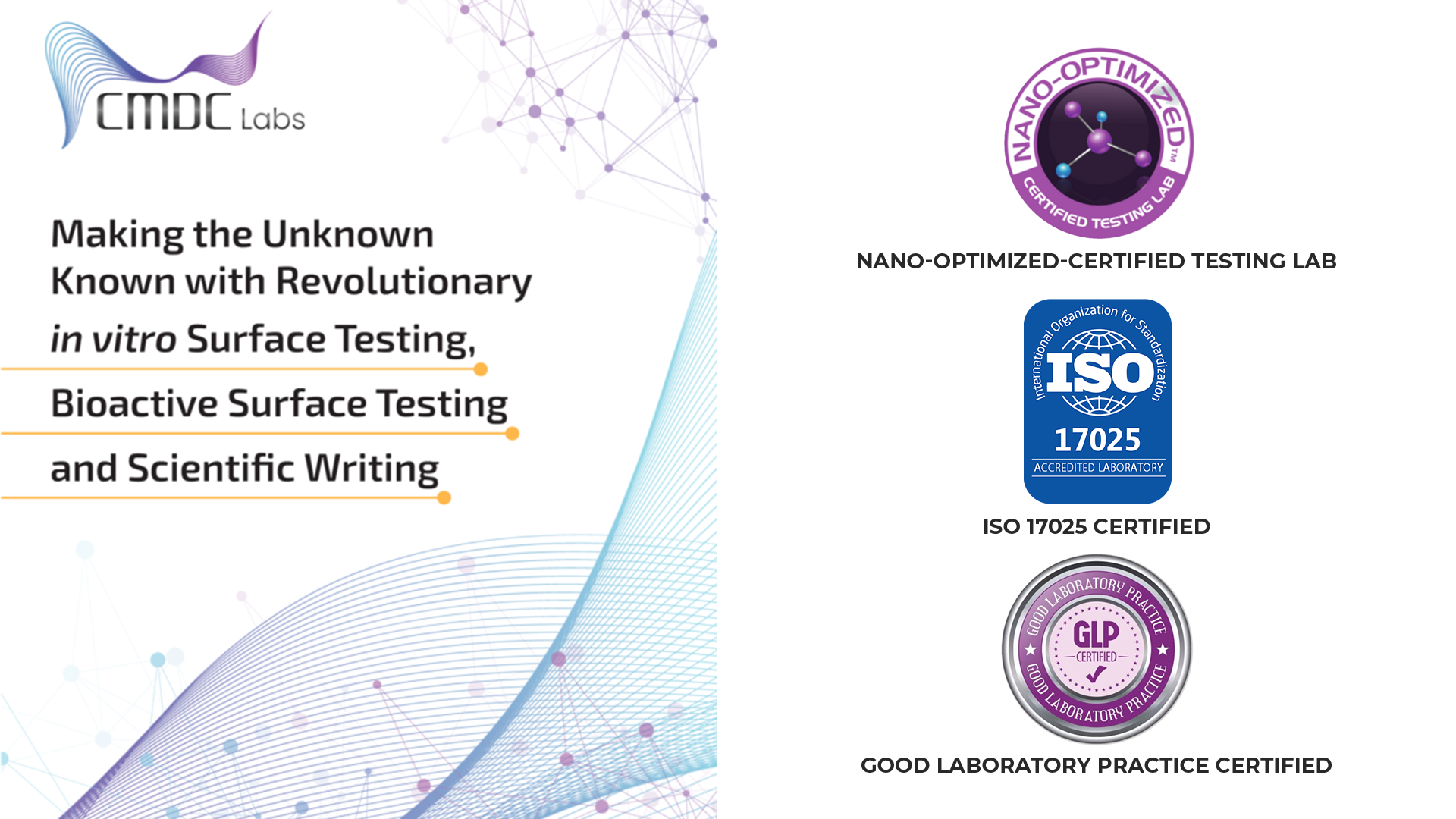In today’s world of empowered consumers, transparency has become the new benchmark of trust.
From grocery shelves to e-commerce listings, buyers are asking a simple but powerful question: “What’s really in my food?”
Responding to this demand, a coalition of leading food manufacturers and ingredient suppliers recently announced the launch of a new Ingredient Transparency Standard — an industry-wide framework designed to ensure that every component of a product, from flavoring extracts to micronutrients, can be traced, verified, and disclosed with scientific confidence.
For testing laboratories like CMDC Labs, this moment represents more than just a policy shift — it’s a transformation in how food safety, regulatory compliance, and consumer trust intersect. Transparency now depends on data, validation, and laboratory-backed integrity at every step of the supply chain.
The Transparency Movement: Why It’s Happening Now
Food transparency has been on the horizon for years, but recent events have accelerated its urgency.
1. Consumer Behavior Has Changed
Modern consumers are not passive buyers. They read labels, compare certifications, and research ingredients online before making purchasing decisions. According to a recent global survey, over 70% of consumers prefer brands that disclose sourcing and testing data — and many are willing to pay more for verified products.
2. Regulatory Pressure Is Rising
Governments worldwide are tightening labeling requirements. The FDA’s new Food Traceability Rule (Section 204 of FSMA) and the EU’s Farm-to-Fork Strategy demand precise ingredient identification and supply-chain traceability.
Brands can no longer rely on generic “clean label” claims; they must substantiate safety and sourcing through verified data.
3. Supply Chains Have Become More Complex
As global sourcing expands, so do risks — from mislabeling and adulteration to hidden allergens and contaminants. Each handoff in the chain introduces uncertainty that only validated testing can eliminate.
Transparency, therefore, isn’t just an ethical choice — it’s a business imperative.
The New Ingredient Transparency Standard: What It Means
The Food Industry Coalition’s Ingredient Transparency Standard, recently covered by FoodIngredientsFirst, aims to establish a universal, science-driven approach to ingredient disclosure.
While still evolving, its core goals include:
- Uniform traceability from source to finished product.
- Third-party verification of ingredient identity and purity.
- Standardized data reporting formats for easy interpretation.
- Integration with digital labeling platforms, including QR-code-enabled transparency.
This initiative doesn’t replace regulatory compliance — it enhances it. By promoting proactive transparency, the industry hopes to build consumer trust and reduce the risk of recalls, misinformation, and brand damage.
For laboratories like CMDC Labs, this shift creates an expanded role: helping brands prove the truth behind their labels through scientifically defensible testing and certification support.
The Role of the Laboratory: Turning Data into Trust
Ingredient transparency is only as reliable as the data supporting it — and that data must come from independent, accredited testing.
At CMDC Labs, we see three major pillars underpinning this transparency revolution:
- Identity Verification — confirming that an ingredient is authentic and unadulterated.
- Contaminant and Allergen Testing — ensuring purity and safety beyond declared ingredients.
- Validated Labeling Support — aligning product claims with scientifically verified evidence.
Here’s how each pillar works in practice.
1. Ingredient Identity Verification: Authenticity Through Science
The first step toward transparency is proving that every listed ingredient is exactly what it claims to be.
CMDC Labs uses a combination of chemical fingerprinting, molecular assays, and spectral analysis to authenticate ingredients and detect substitution or dilution.
Common Applications Include:
- Botanical authenticity – verifying herbal extracts (e.g., ginseng, turmeric) using DNA barcoding or LC-MS profiling.
- Spice verification – detecting adulteration (e.g., paprika mixed with brick dust, saffron with synthetic dyes).
- Protein source confirmation – distinguishing between animal, plant, or microbial origins in alternative proteins.
- Flavor and additive verification – confirming purity of natural flavor compounds against synthetic analogs.
With global food fraud costing the industry over $40 billion annually, this verification protects both consumers and brands.
CMDC’s validated methods provide defensible data for ingredient provenance and composition — a foundation for true transparency.
2. Contaminant and Allergen Testing: Protecting Safety and Integrity
Transparency doesn’t end with what’s on the label — it extends to what isn’t supposed to be there.
Modern food production faces numerous contamination risks: pesticide residues, heavy metals, microplastics, and cross-contact allergens, to name a few.
CMDC Labs offers a comprehensive suite of microbiological, chemical, and allergen testing services to detect these hidden threats.
Microbiological Testing Includes:
- Salmonella spp., Listeria monocytogenes, E. coli O157:H7, and Staphylococcus aureus detection.
- Spoilage organism screening for shelf-stable and refrigerated products.
- Environmental monitoring programs for processing facilities.
Chemical and Allergen Testing Includes:
- Pesticide and herbicide residue analysis via GC-MS/MS.
- Heavy metal quantification (lead, arsenic, mercury, cadmium) using ICP-MS.
- Aflatoxin and mycotoxin testing in grains, nuts, and spices.
- Allergen residue verification for gluten, soy, dairy, and peanut traces.
This combination of tests ensures that every declared ingredient is pure, compliant, and safe — meeting both regulatory standards and consumer expectations.
3. Validated Labeling Support: Bridging Science and Communication
Even the most advanced testing is meaningless if its results aren’t communicated clearly and accurately.
CMDC Labs bridges this gap through validated labeling support, helping brands translate lab findings into compliant, credible on-pack information.
Our services include:
- Nutritional fact verification for FDA and EU labeling formats.
- Claim validation (e.g., “non-GMO,” “organic,” “pesticide-free,” “vegan-certified”) through confirmatory testing.
- Allergen and cross-contact statements supported by quantitative analysis.
- QR code data integration that links consumers to test-backed transparency reports.
By combining science and communication, CMDC Labs enables brands to build consumer confidence rooted in verifiable data — not just marketing language.
Building Traceability: The Digital Dimension
True ingredient transparency requires more than laboratory testing — it needs traceable digital records that travel with the product.
CMDC Labs supports traceability initiatives by providing data formats compatible with digital platforms and blockchain-based systems.
Each batch tested can generate:
- A Certificate of Analysis (COA) with QR integration.
- Chain-of-custody documentation ensuring sample authenticity.
- Lot-level metadata that supports end-to-end traceability audits.
This capability allows brands to connect laboratory integrity directly with digital transparency tools — giving both regulators and consumers access to trusted information in real time.
Why Transparency Testing Matters More Than Ever
The drive for ingredient transparency is about more than compliance — it’s about resilience in a volatile global food ecosystem.
1. Protecting Against Supply Chain Vulnerability
As the COVID-19 pandemic and global conflicts disrupted ingredient sourcing, the food industry learned that traceability isn’t just ethical — it’s operationally critical. Verified data helps producers pivot quickly to alternative suppliers without compromising safety.
2. Strengthening Brand Reputation
In an era of viral recalls and online reviews, consumer trust can be lost in hours. Brands with third-party verification can respond faster and communicate confidently, minimizing reputational fallout.
3. Preparing for the Next Regulatory Phase
Future food labeling laws will demand even greater data transparency — including potential requirements for carbon footprint and sustainability metrics. By integrating scientific testing now, brands position themselves for regulatory readiness.
How CMDC Labs Partners with the Food Industry
CMDC Labs collaborates across the entire food ecosystem — from multinational processors to boutique organic brands — to integrate transparency into every stage of production.
Our end-to-end ingredient verification and contaminant testing model includes:
- Pre-sourcing assessments to qualify ingredient suppliers.
- In-process testing to validate safety during production.
- Final product verification before market release.
- Periodic auditing to ensure consistency and ongoing compliance.
Each partnership begins with a risk-based consultation, identifying the most critical testing priorities based on:
- Ingredient type and sourcing geography.
- Historical contamination trends.
- Brand-specific label claims.
- Regulatory jurisdictions (FDA, USDA, EFSA, etc.).
From there, CMDC builds a custom testing plan designed to deliver clarity, compliance, and competitive advantage.
A Case for Independent Verification: Transparency as a Business Advantage
Some brands still view laboratory testing as a regulatory obligation. In reality, it’s a strategic differentiator.
Independent verification allows companies to:
- Market data-backed claims confidently.
- Reduce recall risk through early detection of issues.
- Enhance ESG reporting by quantifying sustainability metrics like pesticide reduction or ethical sourcing.
- Attract B2B partnerships with retailers demanding verified supplier documentation.
The result is not just compliance — it’s commercial credibility.
Future of Transparency: From Chemical to Ethical Clarity
As science evolves, the definition of transparency will expand. Future standards will go beyond ingredient identity to include:
- Sustainability testing – measuring environmental impact and resource footprints.
- Microplastic detection – ensuring emerging contaminants are addressed.
- Digital twin traceability – linking real-time sensor and blockchain data for every product lot.
- AI-assisted risk analysis – using machine learning to detect supply chain anomalies faster than human oversight.
CMDC Labs is already aligning its infrastructure with these next-generation transparency demands — ensuring our partners stay ahead of industry evolution rather than reacting to it.
Conclusion: Transparency Begins with Verification
The food industry’s new transparency standard represents more than a compliance goal — it’s a cultural shift toward accountability, authenticity, and scientific integrity.
For CMDC Labs, this transformation reaffirms our mission: to help brands not only meet regulations but earn trust through data.
Through independent verification, contaminant testing, and validated labeling, we make transparency measurable, defendable, and real.
Because in the future of food, trust won’t come from marketing — it will come from science.
Sources: FoodIngredientsFirst, FDA.gov (FSMA 204), Codex Alimentarius, ISO 17025, EFSA, GFSI, FoodChain ID Transparency Framework

